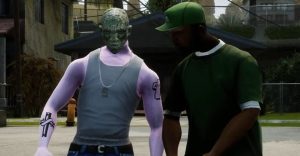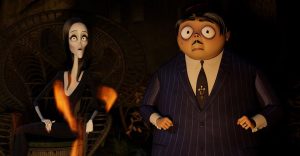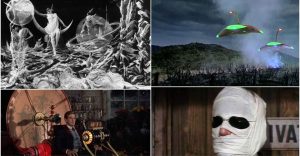Watchmen: 10 Biggest Changes Zack Snyder Made To The Comics

Zack Snyder’s Watchmen is hands-down one of the most faithful comic book adaptations of all time. Indeed, Snyder’s commitment to accurately translating Alan Moore and Dave Gibbon’s seminal deconstructionist maxiseries to the big screen earned him both praise and criticism. Although pundits unanimously agreed that Snyder’s film was a visual feast, many felt that the director’s slavish approach ironically failed to capture the source material’s spirit.
Whether or not that’s true remains up for debate, but it’s worth pointing out that Snyder and screenwriters David Hayter and Alex Tse did make changes to Watchmen. And while some of these amount to minor, immaterial tweaks, as this list illustrates, others were actually pretty major!
10 The Crimebusters’ Name Was Scrapped

Let’s kick things off with one of the less earth-shattering changes Zack Snyder made to Watchmen: the inclusion of a supergroup named the Watchmen. As anyone who’s read the original series can tell you, there’s no team by that name in the book. Instead, the world’s first superhero team was called the Minutemen, while their successors planned to band together as the Crimebusters.
Snyder’s version keeps the Minutemen moniker, but substitutes “Watchmen” for “Crimebusters.” Not exactly a game-changer, but something the movie’s detractors point to as an example of Snyder’s less nuanced take. Incidentally, the film also seems to imply that the Watchmen/Crimebusters were an active team at some point, whereas Moore and Gibbons make it clear the whole enterprise was a bust.
9 No Advanced Technology

A key subplot in Watchmen is that Doctor Manhattan’s godlike powers are responsible for the emergence of technology far beyond the narrative’s 1985 setting. Most notably, electric vehicles are commonplace decades before they would be rolled out in the real world.
In the movie, there’s no suggestion that such technological advances took place. On the contrary, Ozymandias’ overarching conspiracy (more on that later) hinges on fooling Manhattan into building a revolutionary new power source, under the pretense of solving the threat posed by a mounting global energy crisis.
8 The Minutemen Get A New Origin

In the Watchmen movie, retired superhero Hollis Mason recalls how the first masked crimefighters were police officers driven to pursue justice through vigilantism. This is an invention on Snyder’s part, with no real basis in the continuity established by Alan Moore. According to Moore, only Mason was a cop, and he – along with the rest of his fellow superheroes – was actually inspired by Hooded Justice, his world’s first ever superhero.
It’s true that some of Mason’s peers held professions aligned with law enforcement (for instance, Captain Metropolis served in the US Marine Corps) but most didn’t. In fact, Hooded Justice is implied to have been a former circus strongman. Is this change drastic? Not really. Yet it subtly undermines the comic’s exploration of sexual fetishism, which – outside of Nite-Owl and Silk Spectre – Snyder didn’t seem comfortable tackling.
7 The Comedian Doesn’t Wear A Gimp Mask

The Comedian wears two distinctly different costumes in Watchmen, and Zack Snyder and costume designer Michael Wilkinson replicate both incredibly faithfully – with one exception. Unlike in the comics, Edward Blake sports a classic domino eye-mask throughout his entire career, never adopting the leather, gimp-style headgear his printed counterpart favored after sustaining a severe facial injury in the 1970s.
Now, we get why Snyder and Wilkinson opted to jettison the gimp mask: covering Jeffrey Dean Morgan’s entire face would have severely limited the actor’s ability to properly convey emotions. Still, the Comedian’s kinky cowl is as memorable as his iconic smiley badge, and its absence only downplays the psycho-sexual elements of the source material.
6 There’s A Lot More Action

As superhero comics go, Watchmen is a comparatively action-lite affair. Sure, there are fights scattered throughout all 12 issues, but they’re portrayed in relatively realistic fashion: brief, brutal brawls in contrast to the bloodless, extended battles that typify the genre.
The same can’t be said for Zack Snyder’s adaptation, however. Here, the grounded struggles presented by Alan Moore and Dave Gibbons have been replaced with the type of high-octane, hyper-stylized fight choreography audiences have come to expect from any standard superhero blockbuster. That said, there’s far more gore on display than your average “cape and tights” cinema outing – yet even this is exaggerated compared to the comics.
5 The Minutemen Take A Backseat

Although the plot of Watchmen focuses on the younger generation of superheroes like Ozymandias and Rorschach, their predecessors (i.e. The Minutemen) still play prominent supporting roles. Given the limited screentime at his disposal – even when you factor in the mammoth, 3.5 hour Ultimate Cut! – Zack Snyder understandably pares back the Minutemen’s presence in the movie.
That’s why the big screen Watchmen only shines the spotlight on the “essential” first generation heroes: the Comedian and the original Nite-Owl and Silk Spectre. This leads to some scenes being recast with other characters (Ozymandias assumes Captain Metropolis’ role during the disastrous team meeting scene) while others are omitted entirely (ex. Laurie’s encounter with Mothman). This is a real shame, so here’s hoping that the upcoming HBO TV series delves deeper into the Minutemen’s rich and troubled history.
4 Rorschach’s Therapy Sessions End Differently

In fairness to Zack Snyder and screenwriters David Hayter and Alex Tse, they do a decent job capturing the broad strokes of Rorschach’s therapy sessions with prison shrink Doctor Malcolm Long. Although several aspects of the troubled vigilante’s backstory are excised – the genesis of his striking shifting inkblot mask, the disturbing reference to Kitty Genovese’s real-life fatal assault, etc. – his cinematic version still hits all the main beats.
Crucially, though, Rorschach’s sessions with Doctor Long end differently. In the 2009 film, Long remains largely unruffled by his experiences with his famous patient until their final, terrifying parting. This represents a significant departure from the comics, where Long is deeply affected by Rorschach’s haunting nihilism, which ironically pushes him to be a less selfish person.
3 Less Juxtaposition Of Dialogue And Visuals

Watchmen saw Alan Moore implementing a variety of sophisticated sequential storytelling techniques in a way that few comic books had before. Chief among these narrative devices is Moore’s trademark trick of juxtaposing text (primarily in the form of dialogue) with imagery, creating new layers of meaning and irony.
Snyder wisely doesn’t really try to replicate this effect in the 2009 adaptation, probably because he simply couldn’t. See, the static nature of comic books allowed Moore to perfectly synchronize specific micro-moments – like every punch and kick thrown during the Comedian’s violent demise – with several lines of dialogue, something that’s near impossible to do in live action.
2 The Comedian’s Part In The JFK Assassination Is Confirmed

Watchmen’s opening credits are one of the flick’s real highpoints, managing to bring audiences up to speed on a decades-long alternate timeline in only a few stylish minutes. Interestingly, this sequence makes one facet of the Comedian’s backstory explicit: the superhero turned government operative is identified as the true perpetrator of the Kennedy assassination.
This was only ever hinted at in the comics (albeit very strongly). Similarly, dialogue by the Comedian all but confirms that he bumped off Washington Post reporters Bob Woodward and Carl Bernstein before they could expose President Nixon’s corruption, something that Alan Moore left slightly more ambiguous.
1 There’s No Alien Squid

Easily the biggest divergence between the Watchmen movie and the maxiseries are their respective endings. Admittedly, the general gist behind both conclusions – an atrocity is committed to unite humanity against a common enemy, averting impending nuclear war – is the same, but they differ greatly in their execution. In the film, Ozymandias obliterates several of the world’s major cities using energy reactors that mimic Doctor Manhattan’s radioactive decay signature. Whereas in the comics, he only targets New York City, and the blame is pinned on a fictitious alien invader.
Making Manhattan the focus of Ozymandias’ scheme means that the movie doesn’t feature an island filled with missing scientists, artists and psychics…or the gigantic, faux-interstellar squid they created. While some fans have lamented the absence of this oversized mutant mollusc, others have argued that the director Zack Snyder’s more restrained, squid-less version of the finale is an improvement on the original!
About The Author

















